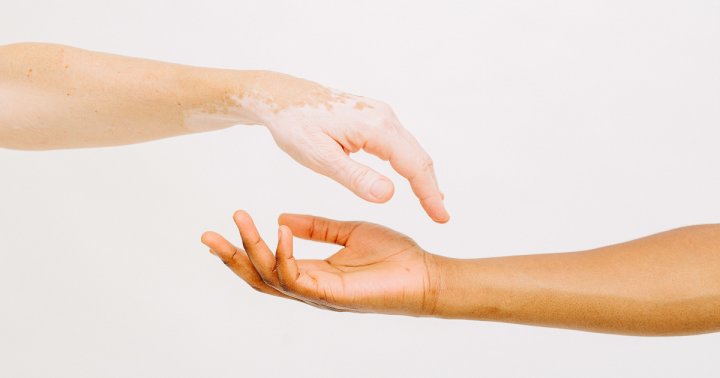At one level or one other, grief is a actuality for everybody. However it’s not restricted to the lack of a cherished one. Grief occurs when life adjustments. And through a world disaster just like the COVID-19 pandemic, which means many people are experiencing some degree of grief, ad infinitum. It is what Annette Childs, Ph.D., a licensed psychotherapist and award-winning creator, calls collective grief—the massive losses that thousands and thousands of persons are experiencing at familial, native, nationwide, and world ranges.
How we navigate our grief is extremely particular person. However understanding that our grief journey has been shared ultimately by these round us will be extremely reassuring. And step one is understanding your grief archetype.
What are grief archetypes, you ask?
Childs describes her function as a grief therapist as a companion to those that really feel misplaced within the woods. “I’ve typically discovered that probably the most dependable mild to shine into the darkness is the one gathered from the collective knowledge of those that have walked earlier than us,” she says. Over the course of her 25-year profession, she has seen distinct patterns amongst her grieving clientele—well-traveled “footpaths” that may assist individuals really feel rather less misplaced. To mirror these patterns, she created 4 grief archetypes.
“At its most elementary degree, exploring grief throughout the content material of an archetype is an easy method to assist us acknowledge shared patterns within the grieving course of,” Childs explains. That is essential as a result of it is common to really feel alone in our experiences once we grieve.
“There is not any ‘proper’ option to do grief, however there are identified pathways to take, and the archetypes may also help you shine a light-weight on which path it’s possible you’ll be taking and offer you perception into others that you could be be nicely served to veer towards sooner or later.”
That is the fantastic thing about the archetypes—they don’t seem to be set in stone, neither is there any type of hierarchy. “They are not a metal field that we’ve got to remain in,” says Childs. “They’re extra like a avenue we have chosen to take, and at any time alongside the best way, notably with schooling and help, we’re prone to merge into a unique lane and alter up our coping patterns.”
The Pilgrim
Greater than half of Childs’ shoppers match the pilgrim archetype. Normally, pilgrims gravitate towards supportive relationships, resembling remedy, AA, or faith-based help. They’re mild and trusting by nature, and through their time of loss, they develop into cautious and not sure of the trail forward. They do not sometimes search grief remedy as a fast repair however reasonably as a result of they need companionship on the journey—somebody to assist them sift via the mess that grief leaves behind.
Within the remedy setting, pilgrims are inclined to deliver their entire hearts and souls into the therapeutic course of and type deep and long-lasting relationships with the helpers of their lives. A pilgrim could arrive into remedy because of loss however will doubtless keep there as they study and develop past that loss.
Do you are inclined to really feel a connection to individuals in your world that others could not even discover—like the favourite checker you at all times go to on the grocery retailer who looks like household? If that’s the case, you possibly can be susceptible to the trail of a pilgrim.
The Villager
The villager archetype is aptly named. Villagers wish to have a sturdy help system in place. They have an inclination to have a instrument package for managing feelings, however they like the thought of including to their assortment. For villagers, the toughest a part of grief is that it tends to catch them off guard. They flip to remedy to reduce the possibilities of that degree of unpreparedness ever occurring to them once more.
Villagers are within the behavior of taking notes from previous experiences. They make it their purpose to be ready for no matter could come. With their easy and logical method to the long run, they have a tendency to function good examples to others.
Are you the sort to at all times have a tissue helpful or a flashlight in your automobile? If that’s the case, it’s possible you’ll match the villager archetype.
The Pioneer
Childs has seen the pioneer archetype the least throughout her apply. Pioneers adapt to grief by studying easy methods to transfer with it—and generally via it or round it. Pioneers are doers and shakers and so they have a tendency to make use of the losses of their life as gas to propel them up and out of the darkness of grief as rapidly as doable. Motion is essential to integrating grief into their world, so pioneers are most probably to experiment with issues like train, journey, and new hobbies.
This tendency does not imply that pioneers bypass any of the trials of loss. They simply transfer via it in another way, tearing off bits of their loss in small items to keep away from wallowing in heavy feelings for too lengthy.
In case your response to grief is studying 4 completely different self-help books on loss, listening to an audiobook on resilience, internet hosting a Friday-night banquet, after which getting up early the subsequent morning to catch a seminar on mala beading your option to happiness, you possibly can very nicely match the pioneer archetype.
The Voyager
A seeker at coronary heart, the voyager archetype is somebody intent on mining for gold within the darkness of loss. Voyagers are at all times seeking to the far-off horizon as a option to make that means out of their difficulties. Voyagers look inward too, in search of a option to pressure progress from what can really feel just like the arid panorama of loss. They’ve a willingness to actually sit with grief and permit it to take them the place it can. That willingness means voyagers are inclined to not solely discover mild on their very own journey however generally to guide others with that mild as nicely.
Are you the type of one that retains a dream journal and actually pays consideration to the symbolism of your nighttime impression? Do you discover that means in what others would contemplate coincidence? If that’s the case, you could be following the trail of the voyager.
The worth of understanding your grief archetype.
For those who can think about the expertise of grief as being misplaced within the woods on a darkish night time, the worth of an archetype—a footpath—instantly turns into clear. Navigating grief from the context of those 4 archetypes is like having a compass at a time once we really feel our most misplaced and alone.
Archetypes on the whole bind us to common symbols, serving to us discover power in our patterns and permitting us to acknowledge potential pitfalls. “Recognizing these patterns does not make our grief disappear, nor does it shorten the period of the expertise,” says Childs. “However it does permit us to maneuver ahead with a bit extra certainty, understanding that others have traveled the identical route.”
To delve deeper into your archetype, try Childs’ grief package. And keep in mind, the best worth of studying your grief archetype, notably throughout a time when experiencing grief in a number of varieties is extra commonplace than ever, is knowing that you just aren’t alone in your expertise.
Need your ardour for wellness to alter the world? Grow to be A Purposeful Vitamin Coach! Enroll immediately to hitch our upcoming stay workplace hours.







